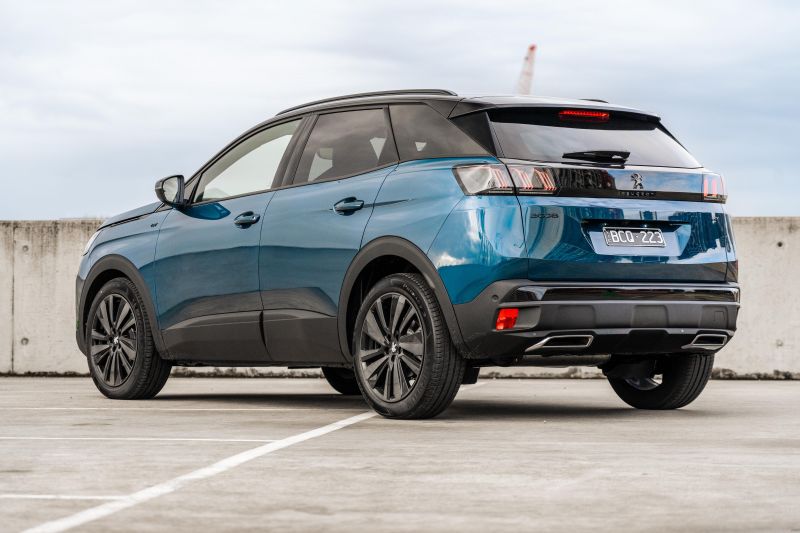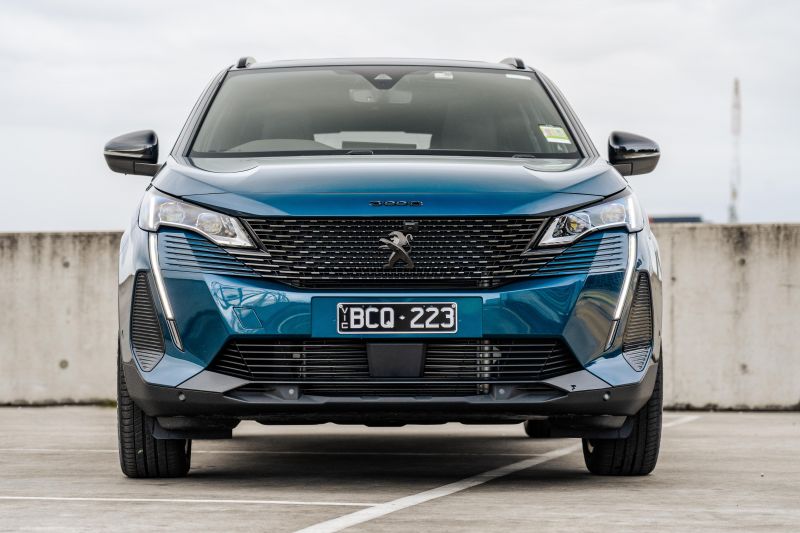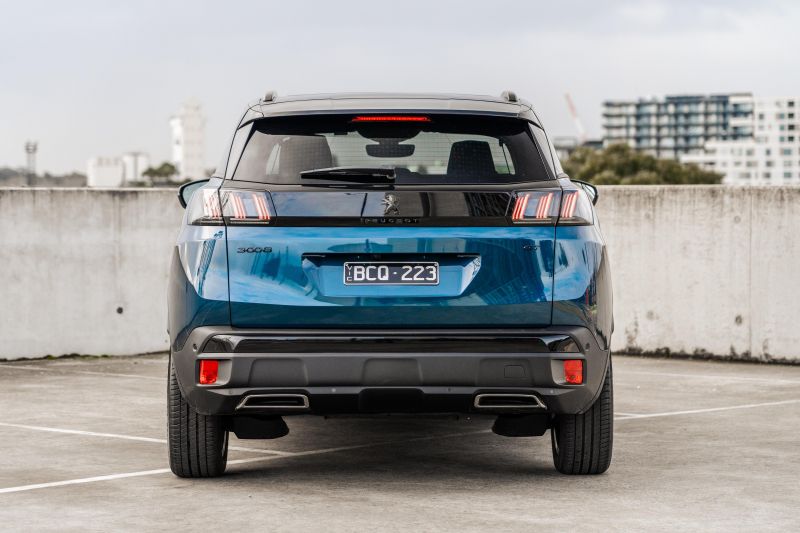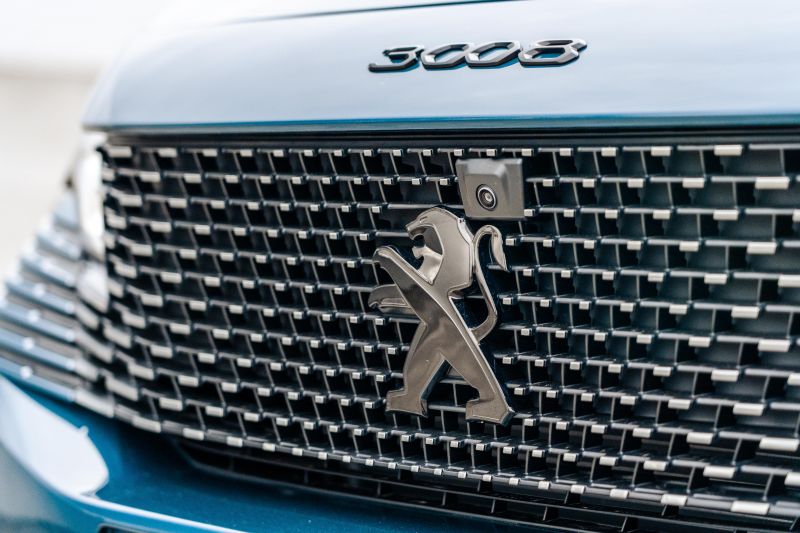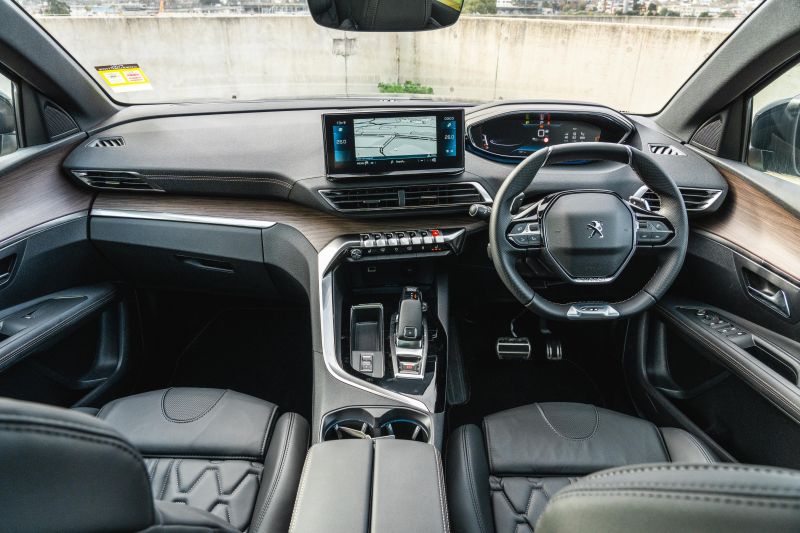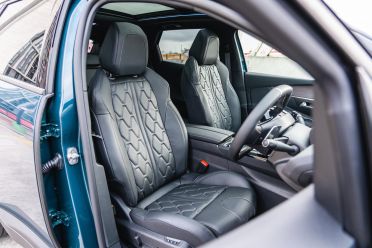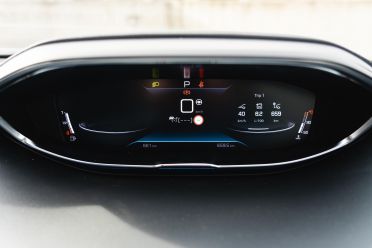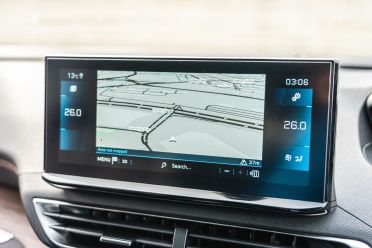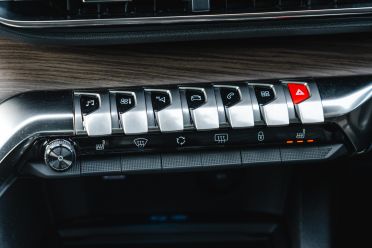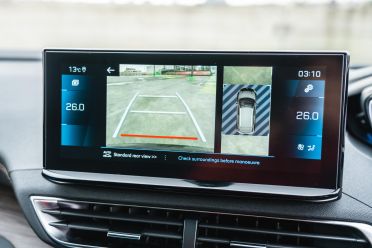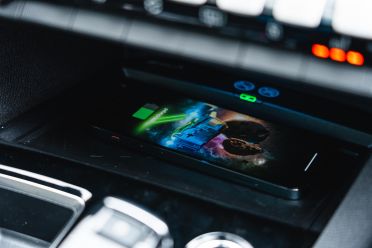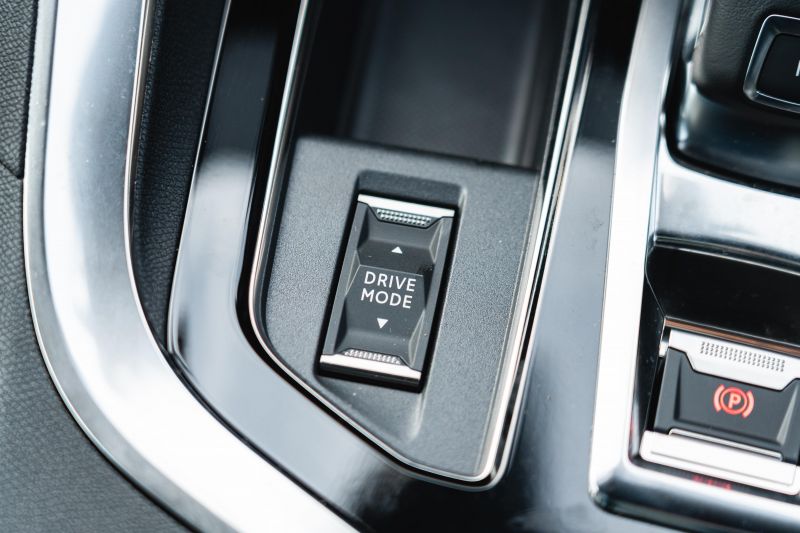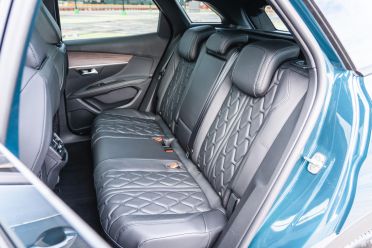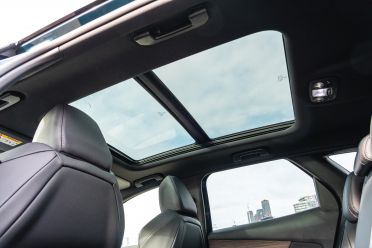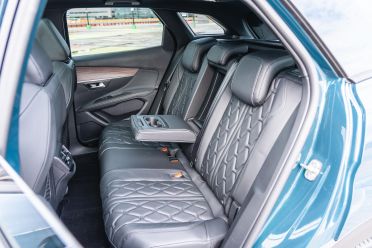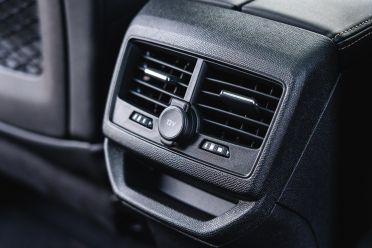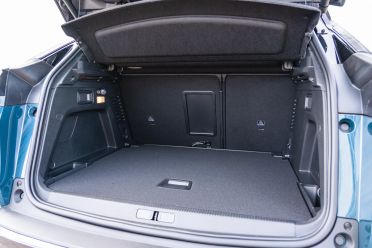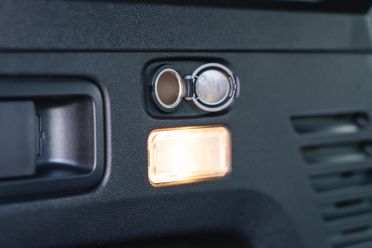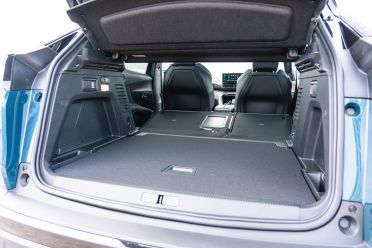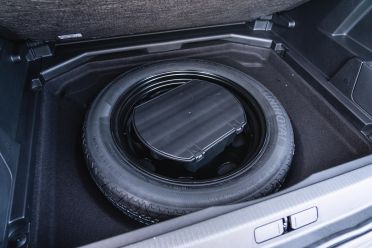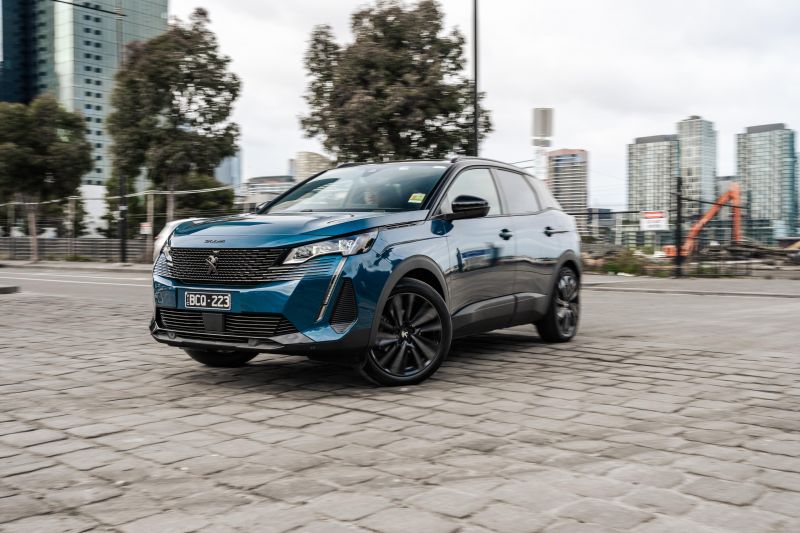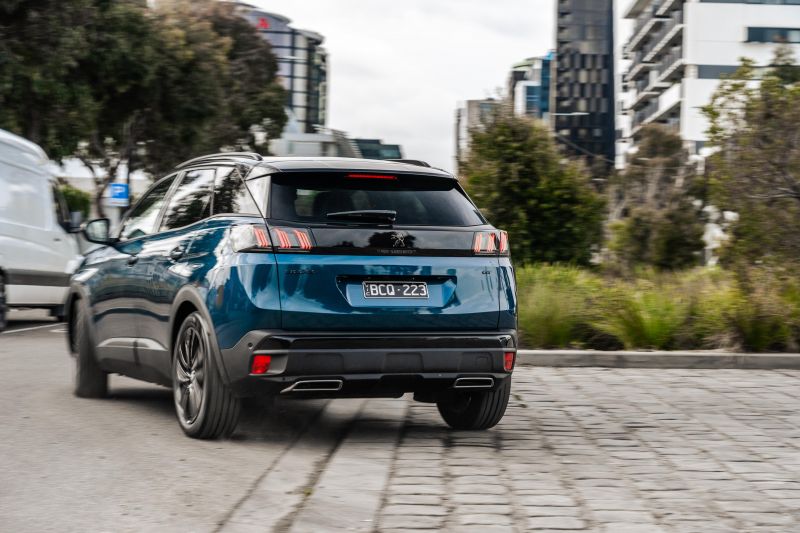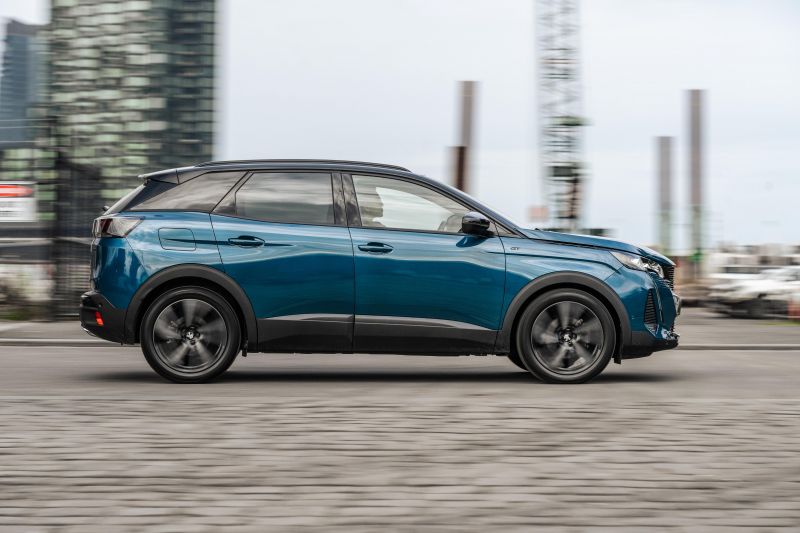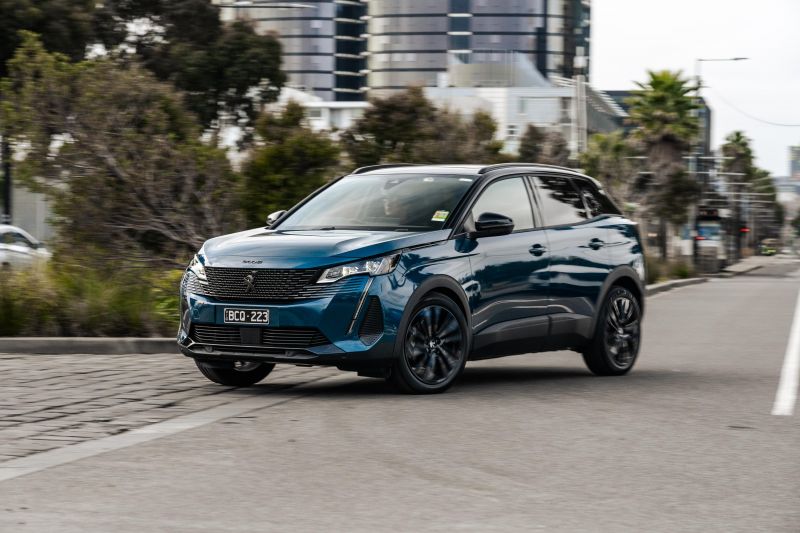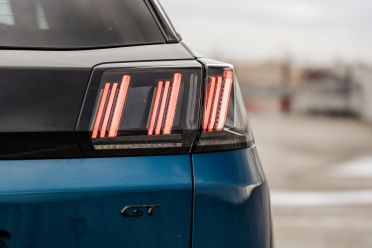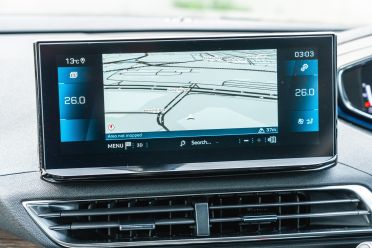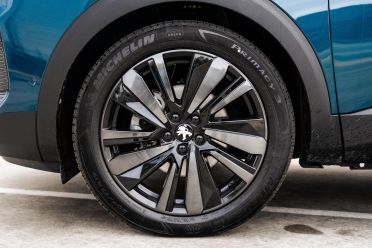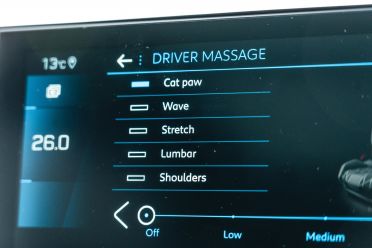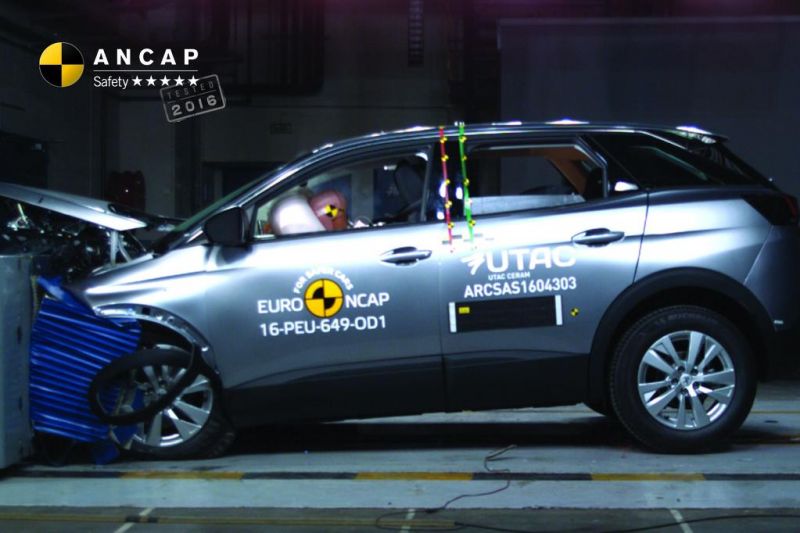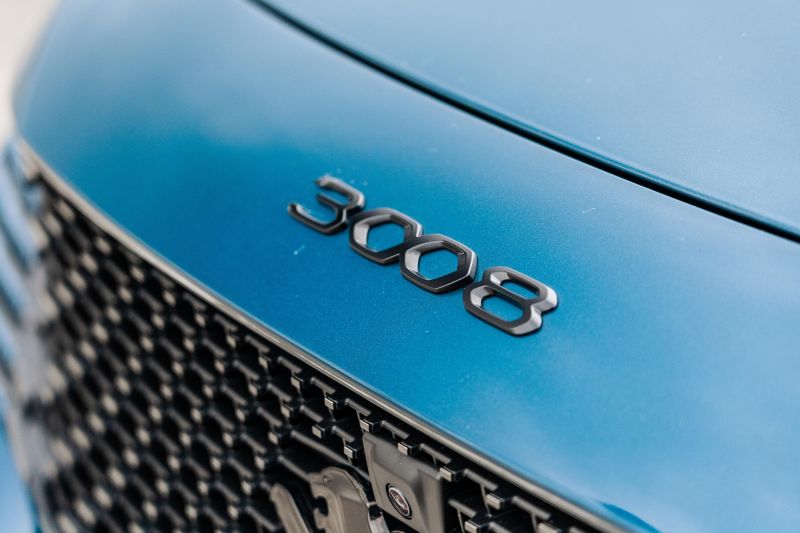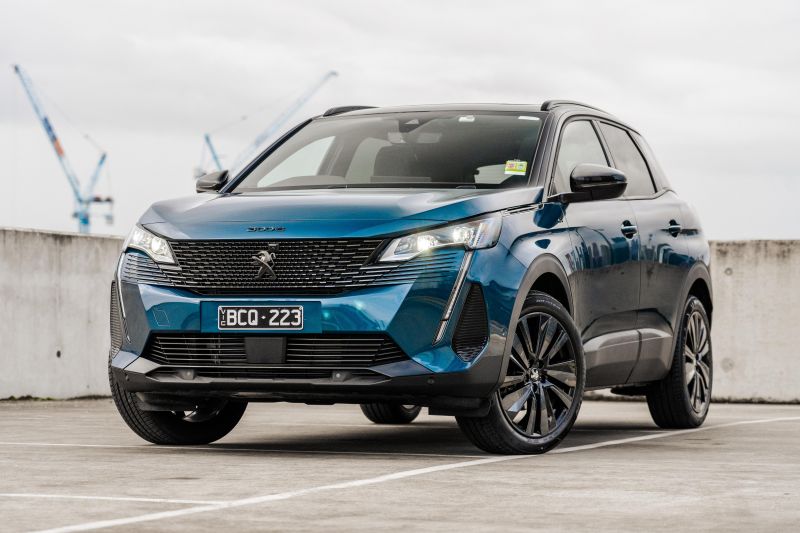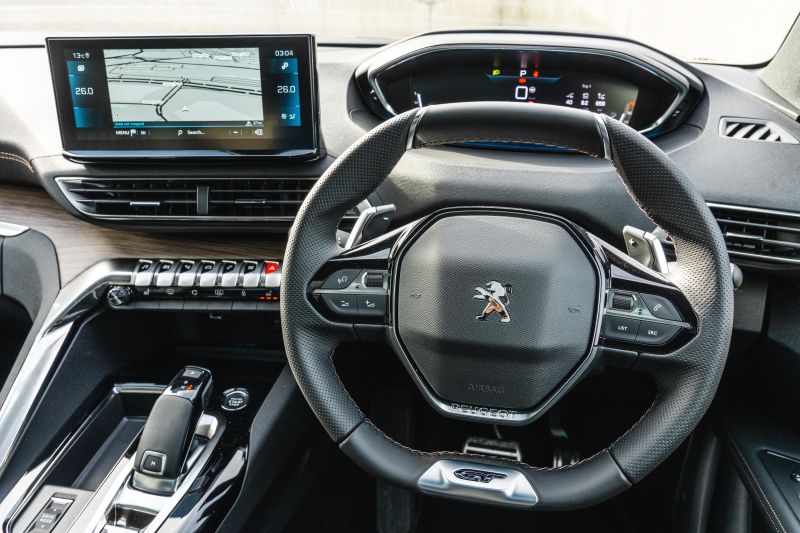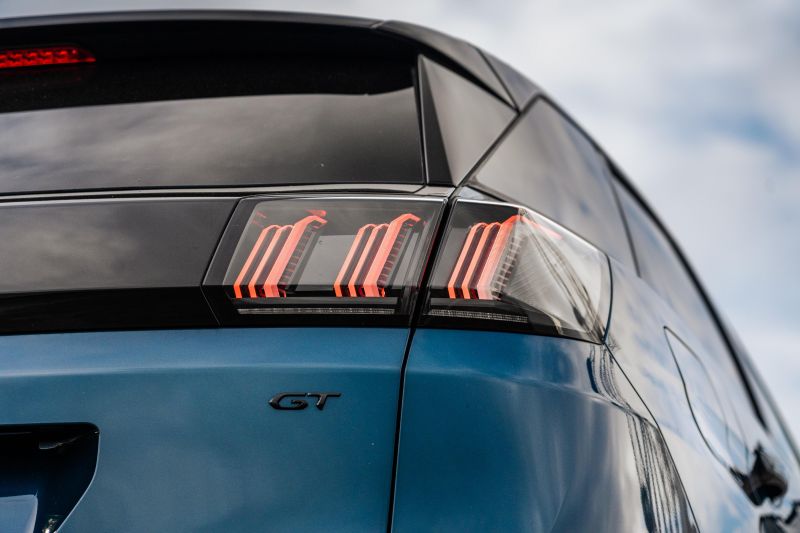Peugeot has often occupied no man’s land in the Australian market.
Its vehicles have traditionally commanded a premium over more mainstream brands like Nissan and Toyota. That’s despite Peugeot being on the same keel as these brands in the European market, and despite the lion badge not having the same cachet as the likes of Audi.
The French brand has long made good cars, but it’s the latest generation of product – like this 2022 Peugeot 3008 GT Sport – that has been been able to tempt buyers with a genuinely unique selling point: design.
The 3008, like the 2008, 508 and 5008, stands out on the road. Last year’s facelift gave it even greater impact, with more defined LED tail light elements, plus plunging daytime running lights up front.
It also boasts an intricate new grille and, though we can’t know for sure it copied, Haval has recently introduced an H6 Hybrid with a very similar grille.
Peugeot hasn’t phoned in its interiors, either. In fact, the 3008’s cabin is even more distinctive than its exterior, and yet doesn’t go too far into eccentric territory.
Nothing in this segment can top the 3008 in design, but is that enough to keep it on your consideration list?

How much does the Peugeot 3008 GT Sport cost?
The price of the GT Sport has climbed by almost $10,000 since the trim level was launched as part of the 3008’s mid-life update in 2021.
It’s priced at $63,431 before on-road costs which, while undercutting the GT Sport Plug-In Hybrid AWD by more than $20,000, sees the flagship petrol 3008 costing a cool $10,000 more than a petrol GT.
That’s a hard pill to swallow, particularly when you consider this variant was launched just over 12 months ago with a price tag of $54,990 before on-roads and came with more equipment at the time.
Due to semiconductor chip shortages, the 3008 GT Sport has also lost its Focal sound system, wireless phone charger and power tailgate, and Peugeot has yet to confirm when these features will return.
Despite this, Peugeot isn’t offering any kind of credit for these missing items as some brands have, and has confirmed it won’t be able to retrofit these later for buyers.
It makes the 3008’s value proposition quite poor, especially when you consider even the base model costs as much as many rival mid-sized SUV’s top-spec models, that no 3008 bar the plug-in hybrid comes with all-wheel drive, and the Peugeot isn’t even one of the larger crossovers in this segment.
An Audi Q3, for example, is ostensibly a small SUV and yet is roughly the same length and only slightly narrower. It can be had in all-wheel drive 40 TFSI quattro guise for $57,900 before on-roads or in sportier S line trim for $63,700 before on-roads.
A larger Lexus NX250 costs $60,800 before on-roads, and the 3008 GT Sport is creeping precariously close in price to the likes of the NX350h and base Genesis GV70. These luxury brands can also offer an after-sales experience Peugeot simply cannot.
It stacks up even worse against mainstream mid-sized SUVs, particularly when you consider Peugeot isn’t a luxury brand, all the 3008’s top-spec rivals come with all-wheel drive and many of its rivals feature more powerful engines.
Key rivals include:
- Ford Escape Vignale AWD: $50,090
- Honda CR-V VTi LX: $53,600 D/A
- Hyundai Tucson Highlander 1.6T AWD: $50,400
- Jeep Cherokee S-Limited V6: $56,950
- Kia Sportage GT-Line 1.6T AWD: $49,370
- Mazda CX-5 Akera 2.5T: $53,380
- Mitsubishi Outlander Exceed Tourer: $52,490
- Nissan X-Trail Ti-L: $52,990
- Renault Koleos Intens AWD: $47,500
- Subaru Forester Hybrid S: $49,340
- Toyota RAV4 Edge AWD Hybrid: $52,700
- Volkswagen Tiguan 162TSI R-Line: $57,690
Prices exclude on-road costs unless specified
What is the Peugeot 3008 GT Sport like on the inside?
From the unconventional layout to the choice of materials and lighting, the 3008’s interior is a feast for the eyes and remains a standout in this segment. The stylish cabin even makes similarly priced luxury-brand rivals look rather dull.
The steering wheel is squared-off and fairly small, sitting closer to your lap in Peugeot fashion, while the instrument cluster is mounted high and is easy to see – no need for a head-up display here.
The centre stack features only two rows of switches and is angled towards the driver, while the tablet-style infotainment system is perched in your sight line. There’s also an unusually shaped shifter that feels good in your hands.
There are expansive concave wood trim pieces on the doors, which flow into wood trim along the dashboard. Soft blue ambient lighting elevates the ambience at night time, with even the panoramic sunroof featuring illuminated accents.
The Nappa leather is supple, while stitching elements on the dashboard and doors add a pop of colour.
The standard massaging driver’s seat is also a suitably upscale inclusion, and you can choose between five different styles, each with multiple levels of intensity. It requires a few button presses to activate, though.
We also like the Magic Wash windscreen wipers where the water comes out of the blades, something typically seen on pricier European fare.
The digital instrument cluster features neat, legible graphics, and you can toggle between different layouts including a rudimentary map view.
It’s not quite Volkswagen/Audi-slick, but there’s more adjustability here than in some rival digital instrument clusters. We do question why the fuel economy screen doesn’t feature a remaining range readout, however.
The infotainment system needs work. There’s no dedicated home screen, though it helpfully features shortcut buttons that remain on screen even when you’re using smartphone mirroring.
Most climate control functions are managed through the touchscreen, though pressing the climate control shortcut buttons on the screen will only allow you to adjust the temperature and fan speed. To access all climate control functions, you need to press one of the switches on the centre stack.
There’s no physical button for the parking assist function, which is instead found in the vehicle menu. This menu also allows you to adjust essentially every active safety and driver assist feature except for the lane-assist systems, for which there remain physical buttons.
The cruise control switches are found on a stalk behind the steering wheel which falls quickly to hand, though the steering wheel switchgear is a bit unusual – buttons for volume adjustment, but a wheel for skipping tracks.
There’s also a voice prompt button on the steering wheel, which allows you to input a navigation address verbally, as well as change the climate controls, and doesn’t work with the smartphone mirroring.
Material quality is generally good. Rubberised plastic is used for the dashboard, the front door tops and the sides of the centre console. It’s not quite luxury grade and it has an unusual pebbled grain, but these are small quibbles.
Leather-look trim is used on all four doors and the ubiquitous gloss black trim is applied relatively sparingly in the 3008, with plenty of metal-look trim to offset it. The paddle shifters also feature metal-look trim, and feel fairly substantial.
While we didn’t observe any squeaks or rattles, build quality was let down by a glove compartment lid that was slightly askew.
Storage is top-notch. The front door pockets easily fit a 1L bottle and the rear doors can accommodate 600ml bottles. The cupholders up front are well-sized, and there’s a small shelf at the base of the centre stack where a wireless charging pad once sat.
The pièce de résistance is an illuminated centre console bin that is so cavernous, you might think it’s a portal to Narnia and not just a place to store gum.
I found the air-conditioning rather lacklustre, and considering I was testing this in Melbourne in the winter, that doesn’t inspire confidence in its hot-weather abilities. The heater was quite strong, however.
Step into the rear and there’s plenty of legroom, with the front seatbacks helpfully scooped out.
There are rear air vents, map pockets, two USB-A ports and a fold-down armrest with cupholders, as well as three top-tether and two ISOFIX anchor points for child seats.
The panoramic sunroof lets in a lot of light, offsetting the rather high belt line, but it directly impacts rear-seat headroom.
If you’re around 180cm or taller and don’t slouch, you’ll find your head pressed against the roof. That forces you to slither down in your seat, impacting comfort.
While the middle seat is only slightly elevated and therefore not much worse for headroom, the centre console does eat into this passenger’s legroom.
Boot space is 591L with the rear seats in place, and a cavernous 1670L with them folded. Helpfully, there are levers in the cargo bay that allow you to drop the second row. Under the boot floor, there’s a space-saver spare.
What’s under the bonnet?
While the 3008 GT Sport features a 1.6-litre turbocharged four-cylinder engine like the Allure and GT, it adds idle stop/start, swaps the six-speed automatic for an eight-speed automatic, and receives more power and torque.
Producing 133kW of power at 5500rpm and 250Nm of torque at 1650rpm, it’s up 12kW and 10Nm on the base petrol engine.
A 2.0-litre turbo-diesel four-cylinder engine is available in the mid-range GT but isn’t available in GT Sport trim.
While its outputs appear modest, the GT Sport’s kerb weight is only 1429kg – 111kg less than the GT Diesel, and 264kg less than a CX-5 Akera.
The key reason the 3008 weighs less than similarly priced rivals is that it doesn’t feature an all-wheel drive system. To get all-paw traction, you have to step all the way up to the GT Sport Plug-In Hybrid.
While the GT Sport can boast a solid power-to-weight ratio, there’s no escaping the fact the 3008 is considerably less powerful than all its rivals at this price point. The most powerful CX-5, RAV4, Tiguan and Escape models produce in excess of 160kW while all offering all-wheel drive.
Peugeot claims combined cycle fuel economy of 5.6L/100km, with the eight-speed automatic making it more frugal than the 1.6-litre turbo-petrol in the Allure and GT (7.0L-7.3L/100km).
Over a mix of inner-city, suburban and highway driving, we averaged 6.9L/100km, and this rose to 8.1L/100km over the course of a week and over 400km of driving.
How does the Peugeot 3008 GT Sport drive?
Many rival SUVs with similarly small turbocharged engines use either continuously-variable or dual-clutch automatic transmissions, while the 3008 sticks with a torque converter automatic. It’s all the better for it.
Shifts are smooth and quick, and the automatic works well with the punchy four-cylinder engine – it’s an improvement over the six-speed automatic in lower models.
The 3008 never feels like a rocketship, but peak torque is available at a low 1650rpm so there’s plenty of pick-up off the line. You can point and squirt the 3008 through traffic and it never feels out of puff.
The ride quality is impressive. We took the 3008 along what I’d hesitate to even call roads to the west of Melbourne – often unsealed dirt roads, some corrugated, some so heavily cratered you can’t see a flat surface.
The Peugeot lapped them up, deftly smoothing out even the most rotten of surfaces. It accomplished this without ever feeling floaty, even over more undulating roads.
What makes this especially impressive is the 3008’s use of a simple torsion-beam rear suspension. Despite this less sophisticated set-up, typically employed to cut costs and improve packaging, only once or twice did the rear end feel unsettled by a bump in the road.
The ride/handling balance in the 3008 is top-notch. Shifting tacks, we took the 3008 to some of the winding mountain roads east of Melbourne. It handled these with aplomb, with well controlled body roll and a secure feel.
Steering weighting and feel is ideal for an SUV this size, and the unusually shaped and sized wheel eventually feels natural. This is one of the more enjoyable vehicles in this class to drive.
There’s a little bit of tyre roar at highway speeds, but the cabin is overall quite hushed. Engine noise is well suppressed at all speeds, and what little you can hear of the muted engine note sounds good.
You can knock it into Sport mode, which brings with it an exaggerated fake engine note. It holds gears for too long to be tolerable in urban driving, but you might like to activate it if you’re going for a spirited drive in the mountains.
The Peugeot’s Lane Positioning Assist, in conjunction with the adaptive cruise control, makes highway driving easier. It’s rather assertive in keeping you in your lane, but it performs adeptly.
Perhaps too assertive is the automatic stop/start, which is rather Volkswagen-esque in the way it activates all too readily. Some rivals require you to more firmly press the brake pedal to switch off the engine, but with the Peugeot you might be in stop/start traffic only to find the steering go dead as the engine cuts out.
The lack of auto hold for the electronic park brake grates, and the 3008 sometimes slides back a surprising amount when you take your foot off the brake to get moving again.
The cameras are, to put it bluntly, rubbish. There isn’t a proper surround-view camera, with the Peugeot instead “reconstructing” as you’re manoeuvring. This often leaves you with a distorted image largely consisting of black and white striped bars as the Peugeot stitches together something useable, which usually takes a few adjustments of the vehicle.
Peugeot can’t even get the reversing camera quality right, with a low-resolution, washed-out display more befitting of a 10-year old car.
There’s no tyre pressure readout in the car, just an under-inflation alert. Should this pop up, you’ll need to pump up your tyres and then “reinitialise” to save the inputs. We had this alert pop up, only to find the pressures were accurate. An actual readout would have been handy.
There are a couple of other quibbles we have with the car. The start button requires an oddly firm press, while opening the door without putting the car in park causes the car to blare an alarm so loud, you may think you’re in a plummeting helicopter.
The static cornering lights, conversely, are worthy of praise. While the 3008 is hardly unique in offering these, this is a feature that should be more common than it is.
What do you get?
3008 GT Sport highlights:
- 19-inch ‘Washington’ alloy wheels
- Eight-way power driver’s seat with massaging
- Heated front seats
- Nappa leather upholstery
- Black-finish exterior trim and grille
- Lime wood dashboard and door trim finish
- Panoramic glass sunroof
Many of these features can be had in the GT if you specify a $3590 option package, while a panoramic sunroof is a $1990 standalone option on the GT.
That means you’re paying a circa-$4000 premium for the GT Sport’s more powerful engine, different transmission, and black trim.
Equipment carried over from lower grades includes:
- 12.3-inch digital instrument cluster
- 10.0-inch touchscreen infotainment system
- Apple CarPlay and Android Auto (wired)
- DAB digital radio
- Satellite navigation
- Keyless entry and start
- Semi-autonomous parking assist
- Dual-zone climate control
- Rear privacy glass
- Leather-wrapped steering wheel and shifter
- Electric parking brake
- Ambient lighting
- Automatic headlights
- Rain-sensing wipers
- Adaptive LED headlights with static cornering lights
You won’t find ventilated front seats, heated rear seats, a power passenger seat and, as of earlier this year, there’s no wireless charging pad or power tailgate either. The 3008 also lost its 10-speaker Focal premium sound system.
You’ll find all of these missing features bar the 10-speaker sound system in a Tucson Highlander costing $13,000 less. While it lacks semi-autonomous parking assist and adaptive LED headlights, it comes with all-wheel drive.
Indeed, most of the 3008’s more affordable competitors offer largely the same list of features, often with one or two extra inclusions the Peugeot can’t match.
Even the Peugeot’s more exotic features can be found in rivals, like adaptive LED headlights (CX-5 Akera), a massaging driver’s seat (Outlander Exceed Tourer) and semi-autonomous parking assist (Escape Vignale).
Is the Peugeot 3008 GT Sport safe?
The Peugeot 3008 has a five-star ANCAP rating based on tests conducted by Euro NCAP in 2016.
It received an adult occupant protection score of 86 per cent, child occupant protection of 85 per cent, pedestrian protection of 67 per cent and safety assist of 58 per cent.
Standard safety equipment includes:
- AEB with pedestrian and cyclist detection
- Blind-spot monitoring
- Lane departure warning
- Lane-keep assist
- Lane Positioning Assist (lane centring)
- Driver attention monitoring
- Traffic sign recognition
- Front, front-side and curtain airbags
- Automatic high-beam
- Adaptive cruise control with stop/go
- Front and rear parking sensors
- Reversing camera with surround view
How much does the Peugeot 3008 GT Sport cost to run?
Peugeot backs the 3008 with a five-year, unlimited-kilometre warranty.
Servicing is required every 12 months or 20,000km, and Peugeot offers five years of capped-price servicing.
The first five services are capped at $397, $711, $397, $724 and $410, or $2639 over five years. That’s slightly less than Allure and GT petrol models ($2767) and the GT Diesel ($2843).
That’s not far off a Kia Sportage 1.6T, which costs $2465 over five years and has shorter 12-month, 10,000km intervals. It also undercuts the $2950 Volkswagen charges for a service plan for its Tiguan 162TSI, and the $2970 Audi charges for the Q3’s five-year plan.
It’s considerably more expensive to service, however, than the likes of a Hyundai Tucson or Toyota RAV4.
CarExpert’s Take on the Peugeot 3008 GT Sport
There’s a lot about the Peugeot 3008 that feels premium and befitting of its lofty price tag. The interior and exterior design looks suitably upscale and distinctive and the feature list is relatively long, but for some recent deletions.
Further, the ride and handling balance is superb, and the combination of a smooth turbocharged four-cylinder engine and torque-converter automatic transmission is refreshing in a segment dominated by CVTs and dual-clutch automatics.
The 3008 mightn’t be the most powerful vehicle in its class, but it performs well both around town and on the open road, and is enjoyable to drive.
But if Peugeot wants to charge Lexus prices for its mid-sized SUV, there are some areas it seriously needs to address, and not just the features it’s had to delete due to the chip shortage.
Its infotainment system needs an overhaul, and the dodgy “360-degree camera” needs to get the heave-ho. A delete option for the panoramic sunroof would also be wise – I loved the feature, but my taller passengers sure didn’t.
Ultimately, however, the 3008 is competing against a swathe of rivals that are more powerful and offer all-wheel drive. It’s a thoroughly good mid-sized SUV, but it needs a serious price adjustment.
Click the images for the full gallery
MORE: Everything Peugeot 3008





